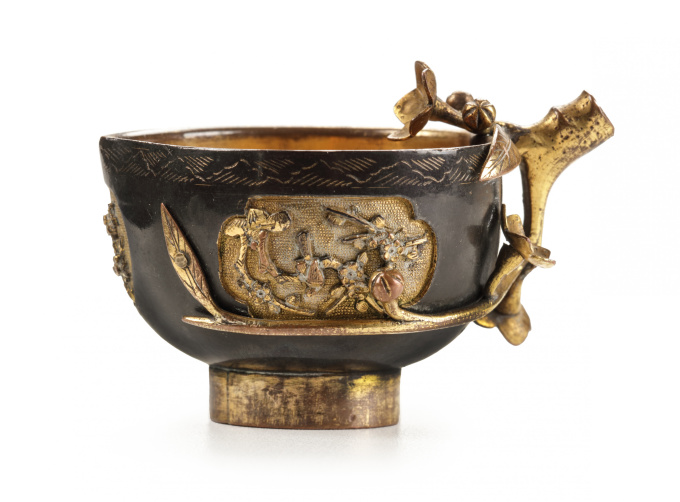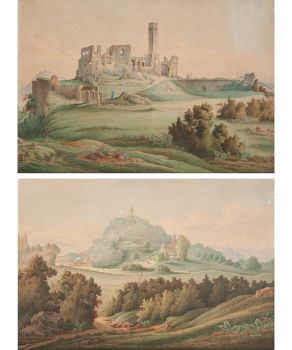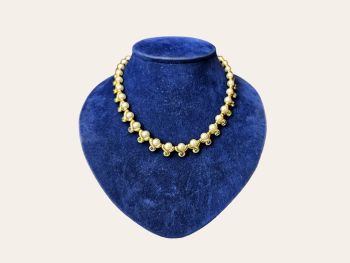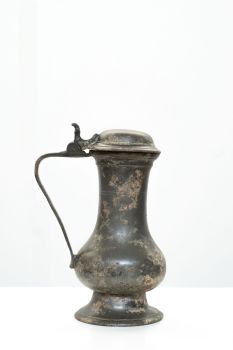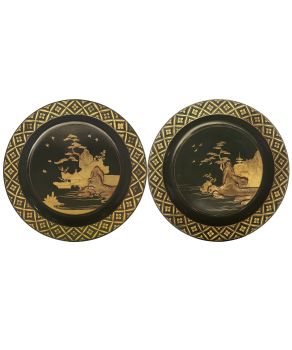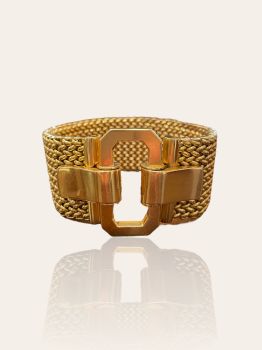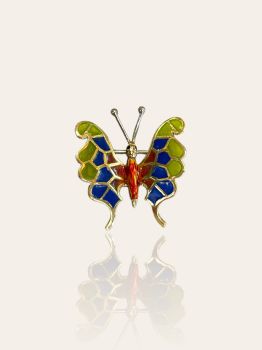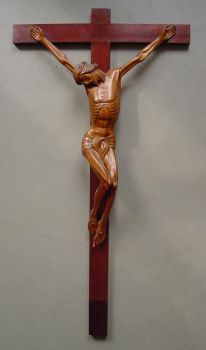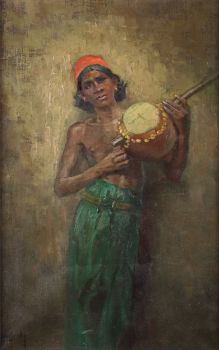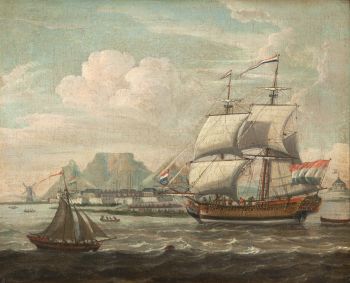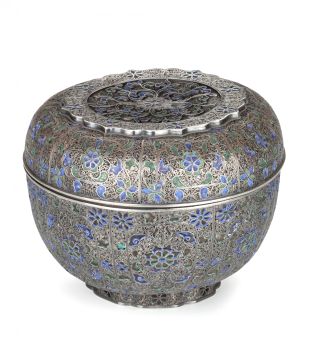EEN JAPANSE KLEINE SAWASA 'PERZIK-VORMIGE' KROESKOP early 18th
Onbekende Kunstenaar
Prijs op aanvraag
Zebregs & Röell - Fine Art - Antiques
- Over kunstwerkA JAPANESE SMALL SAWASA 'PEACH-FORM' CRUCIBLE CUP
Edo period, early 18th century
With a gilt foot-ring and inside, with a handle to one side of the cup in the form of a leafy branch with prunus flowers, extending along the sides of the cup, ending in two leaves at the opposite end of the cup with a small rose on the rim, with a cartouche to each side with gilt floral sprays in high-relief, as well as a round cartouche with flower decoration.
H. 4.7 x W. 7.5 cm
Note:
For a Sawasa cup with saucer see Uit Verre Streken, November 2018, item 51.
For further reading see the exhibition catalogue, Japanese export art in black and gold, 1650-1800, Rijksmuseum Amsterdam, 1999.
Sawasa ware is a particular group of black lacquered and gilt artifacts, produced initially in Japan/Nagasaki and later perhaps also in China and Indochina. These wares are characterized by their European shapes and Asian/Chinese decorative motives. From the late 17th till the late 18th century, the Dutch VOC, but more so private merchants, used the Dutch trade base, Deshima in Nagasaki, to order precious Sawasa ware for the rich Eurasian elite in the VOC headquarters in Batavia but also to satisfy the taste for exotic rarities in Europe. With the collapse of the VOC, the occupation of the Netherlands by the French armies and of the Dutch East Indies by the English at the end of the 18th century, the production of Sawasa ware came to a sudden end. - Over kunstenaar
Het kan voorkomen dat een kunstenaar of maker onbekend is.
Voor sommige werken is het niet te bepalen door wie het gemaakt is of dat het is gemaakt door (een groep) ambachtslieden. Voorbeelden zijn beelden uit de Oudheid, meubels, spiegels of handtekeningen die vaak niet duidelijk of leesbaar zijn. Maar ook sommige werken zijn helemaal niet gesigneerd.
Ook kunt u de volgende beschrijving vinden:
•"Toegeschreven aan …." waarschijnlijk een werk van de kunstenaar maar niet zeker of gedeeltelijk
•“Atelier van ….” of werkplaats van” een werk uitgevoerd in het atelier of atelier van de kunstenaar, eventueel onder zijn toezicht
•“Cirkel van ….” een werk uit de periode van de kunstenaar die zijn invloed laat zien, nauw verbonden met de kunstenaar maar niet noodzakelijkerwijs zijn leerling
•“Stijl van ….” of “Volger van ….” een werk uitgevoerd in de stijl van de kunstenaar, maar niet noodzakelijk door een leerling; kan eigentijds of bijna eigentijds zijn
•“Wijze van ….” een werk in de stijl van de kunstenaar maar van latere datum
•"Na …." een kopie (van welke datum dan ook) van een werk van de kunstenaar
•“Getekend…”, “Gedateerd….” of “Ingeschreven” dan is het werk gesigneerd/ gedateerd/ ingeschreven door de kunstenaar. De toevoeging van een vraagteken duidt op een element van twijfel
•"Met handtekening ...", "Met datum ...", "Met opschrift..." of “Draagt signatuur/datum/opschrift” dan is de handtekening/datum/opschrift toegevoegd door iemand anders dan de kunstenaar
Bent u geïnteresseerd om dit kunstwerk te kopen?
Artwork details
Related artworks
Onbekende Kunstenaar
François-Théodore Legras – Tall “Fleurs de Pommier” apple blossoms vase1900 - 1909
Prijs op aanvraagAntiques Emporium
Onbekende Kunstenaar
Series of 6 Chinese cups and saucers (Yongzheng period)1722 - 1735
Prijs op aanvraagKuipers Kunst & Antiek
1 - 4 / 12Onbekende Kunstenaar
EEN IVOREN NETSUKE VAN EEN NEDERLANDER MET EEN HAAN18th century
Prijs op aanvraagZebregs & Röell - Fine Art - Antiques
Onbekende Kunstenaar
A rare Japanese export lacquer medical instrument box1650 - 1700
Prijs op aanvraagZebregs & Röell - Fine Art - Antiques
Onbekende Kunstenaar
AN IVORY NETSUKE OF A DUTCHMAN FROLICKING WITH A SMALL BOY18th century
Prijs op aanvraagZebregs & Röell - Fine Art - Antiques
Onbekende Kunstenaar
A RARE LARGE JAPANESE LACQUERED LEATHER TELESCOPE1750 - 1800
Prijs op aanvraagZebregs & Röell - Fine Art - Antiques
Onbekende Kunstenaar
A SMALL IVORY NETSUKE OF A DUTCHMAN WITH A DRUM1750 - 1800
Prijs op aanvraagZebregs & Röell - Fine Art - Antiques
Onbekende Kunstenaar
The Stamford Raffles Secretaires.1800 - 1813
Prijs op aanvraagZebregs & Röell - Fine Art - Antiques
1 - 4 / 21HUGO VILFRED VON PEDERSEN
Gadesanger fra Singapore (Musician from Singapore)1870 - 1959
Prijs op aanvraagZebregs & Röell - Fine Art - Antiques
Dutch School
Aankomst van een Nederlandse Oost-Indiëvaarder in de Tafelbaai18th century
Prijs op aanvraagZebregs & Röell - Fine Art - Antiques
Theo Meier
Een Balinese vrouw met offergaven1936
Prijs op aanvraagZebregs & Röell - Fine Art - Antiques
1 - 4 / 12

